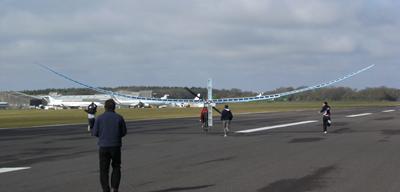Dr Alexander Forrester MEng, PhD, CEng, MIMechE
Senior Lecturer in Computational Engineering, Institute for Life Sciences/Faculty of Health Sciences Knowledge Mobilisation Fellow

Dr Alexander Forrester is Senior Lecturer in Computational Engineering within Engineering and Physical Sciences at the University of Southampton.
I studied for a Masters in Aerospace Engineering followed by a PhD in Computational Engineering at the University of Southampton, where I am now a Senior Lecturer, teaching engineering design and optimisation.


My research interests lie in the efficient use of simulation and experiments in design optimisation. Since 2001 I have been developing 'surrogate modelling' methods to speed-up optimization. My techniques have been applied to wing aerodynamics, gas turbines, satellite structures and Formula One racecar design.
A video lecture (with slides) I gave on surrogate modelling.
In recent years I have been translating my aerospace engineering techniques into sports engineering and health sciences.

My team is developing methods and software to measure athlete and patient physical activity using remote sensors, including those found in mobile phones. A particular focus is monitoring and investigating arthritis.


